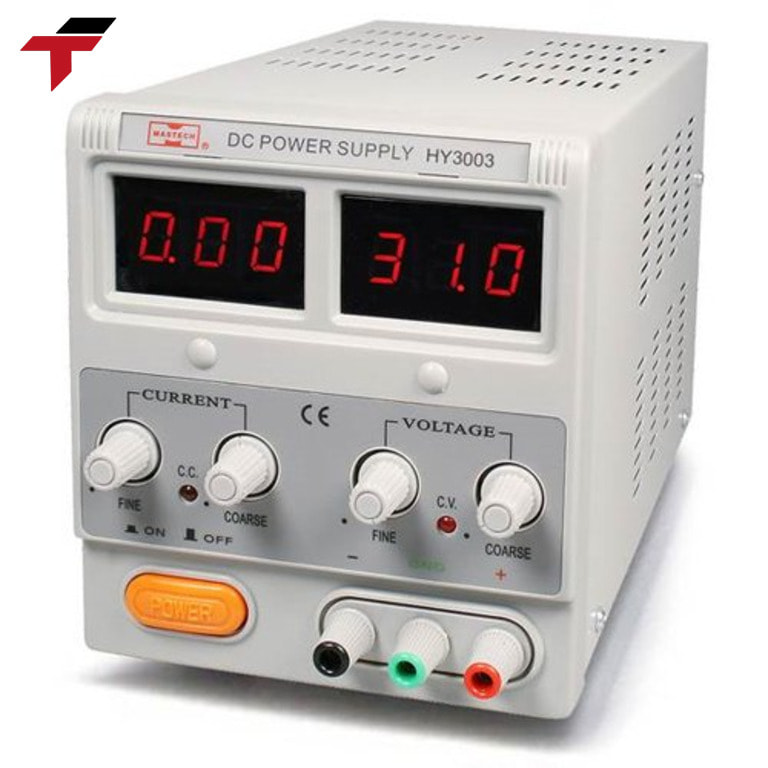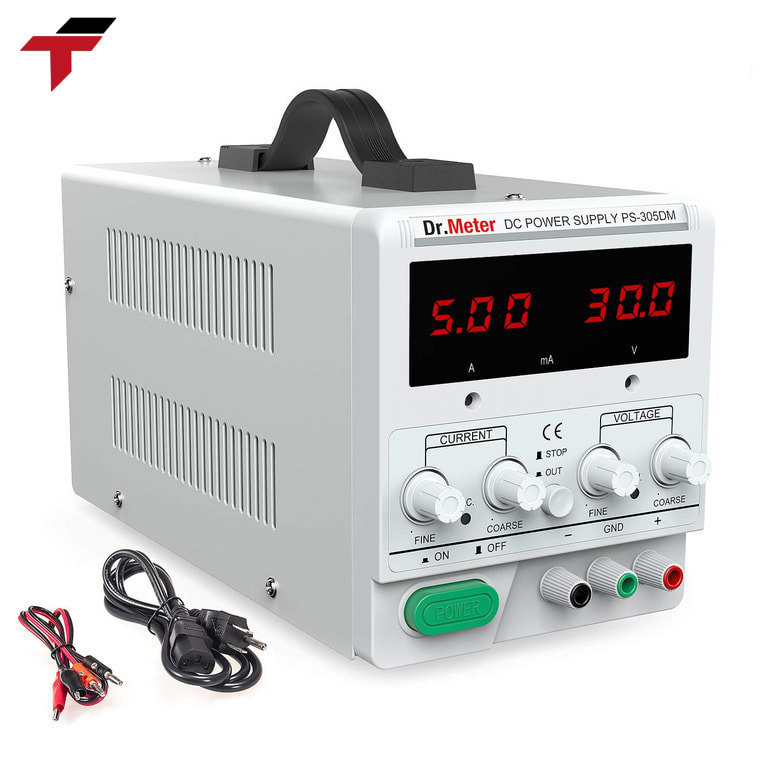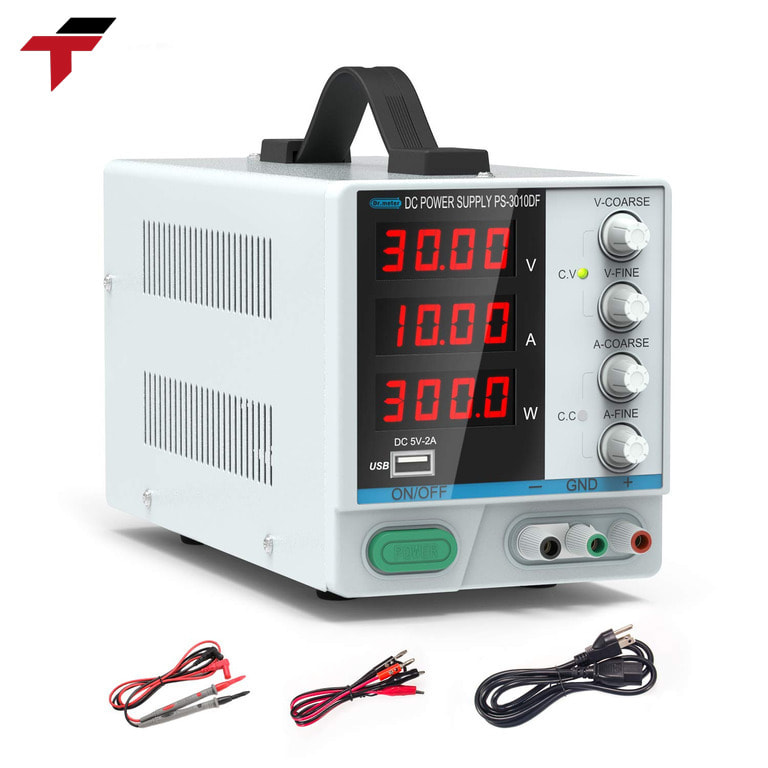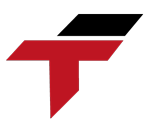A Power Supply is a device that provides power to devices or systems and converts the input power into a form of energy that the device can use.
Most electronic devices require direct current (DC), while the power from the grid is usually alternating current (AC). Therefore, the Power Supply performs the conversion process from AC to DC to meet the needs of the devices.
How many parts does a Power Supply consist of?
A Power Supply consists of the following four main parts: Transformer, Rectifier, Filter, Voltage Regulator
Transformer
A transformer is an important component in a power supply, especially in systems that use alternating current (AC) power. It performs the function of changing the voltage from a high level (such as 220V AC) to a lower level, suitable for the requirements of the device or system.
In addition, the transformer also acts as an electrical isolation between the power supply and the circuit to protect the device from problems such as short circuit or overload.
Rectifier
A rectifier is a component that converts alternating current (AC) from the input source into direct current (DC), which is necessary for most electronic devices.
The rectification process often uses semiconductor components such as diodes or diode bridges, which allow current to pass in only one direction.
Filter
A filter is used to smooth and stabilize the direct current (DC) after passing through the rectifier. The rectified current still contains ripples, which can cause interference or damage to sensitive equipment. The result is a more stable output current, ensuring efficient and safe operation of the equipment.
Voltage Regulator
A voltage regulator is an essential component that helps keep the output voltage of the power supply stable, regardless of changes in the input voltage or load.
In addition, some regulators also integrate overcurrent or short circuit protection functions, ensuring system safety.

Power Supply is composed of 4 parts
How many types of Power Supply are there?
Classification by capacity
- Small capacity power supply (300W – 450W): Usually used for office computers, light entertainment computers, or systems using integrated graphics cards.
- Medium capacity power supply (500W – 750W): Suitable for mid-range gaming computers, multitasking computers, or systems using mid-range discrete graphics cards.
- Large capacity power supply (850W or more): For high-performance gaming computers, professional computers, or systems using multiple graphics cards.
Classification by operating principle
- Linear Power Supply – LPS: Uses a transformer to reduce AC voltage and then converts it to DC through a rectifier and filter. Suitable for devices that require clean and stable power, such as measuring equipment or audio systems.
- Switching Mode Power Supply – SMPS: Converts AC to DC, then uses a high-frequency pulse switching circuit to regulate the voltage. Used in computers, telecommunications equipment, and modern electronic systems.
- Regulated Power Supply: Regulated power supply ensures that the output voltage is always stable, regardless of changes in load or input voltage.
- Unregulated Power Supply: This type of Power Supply does not have a voltage regulation circuit, so the output voltage may vary depending on the load and input voltage.
What benefits does a Power Supply bring to businesses?
A Power Supply is not just a simple power conversion device, but also plays an important role in maintaining the performance and protecting electronic devices. Below are the outstanding benefits that a Power Supply brings to understand why it is an indispensable component in every electronic application.
- Providing stable power to devices: Ensuring that devices operate correctly and safely, avoiding overload or voltage shortage. This is very important for sensitive electronic devices, requiring stable voltage and current to operate effectively.
- Converting power from AC to DC (or vice versa): In electronic devices, most components require direct current (DC) to operate, while the power from the grid is usually alternating current (AC). Power Supply converts AC to DC to supply devices such as computers, televisions, and telecommunications equipment.
- Uninterruptible Power Supply (UPS): UPS (Uninterruptible Power Supply) provides backup power during power outages, helping to maintain the operation of important devices such as computers, medical systems, or servers for a short time.
- Protecting equipment from electrical problems: Power Supply is equipped with protection circuits to cut off the power supply when problems such as overload, short circuit, or overheating occur.
- Energy saving: Modern power supplies, especially switching power supplies (SMPS), are more efficient than linear power supplies, helping to reduce energy consumption and save electricity.

The benefits that Power Supply brings to businesses
What are the things to consider when choosing a Power Supply?
Choosing the right Power Supply for your device is not easy. Here are some factors to consider when choosing a power supply:
- Wattage: You need to determine the wattage of the device that the Power Supply will power. Too little wattage can lead to overloading, while too much wattage will increase the cost and size of the power supply.
- Voltage and current: Determine the voltage and current levels required by the device. A good Power Supply will provide the right power for the device’s requirements, ensuring stable operation and protection from electrical faults.
- Efficiency: High efficiency saves energy and reduces heat generation. Today’s switching power supplies (SMPS) are very efficient, so they are very popular in high-tech applications.
- Size and portability: If you need a Power Supply for mobile devices or limited space, choose a power supply that is compact and lightweight.
- Protection features: You should choose a power supply with protection features against electrical problems such as overload, overvoltage, short circuit, to help protect your devices from damage.

Things to note when choosing Power Supply
Conclusion
Power Supply plays an important role not only in providing power to devices but also ensuring stability and protecting devices from electrical problems. Any electronic device, from personal computers, audio equipment, to complex industrial systems, requires a stable power source to operate properly. Therefore, choosing a power supply that suits your needs is very important.
